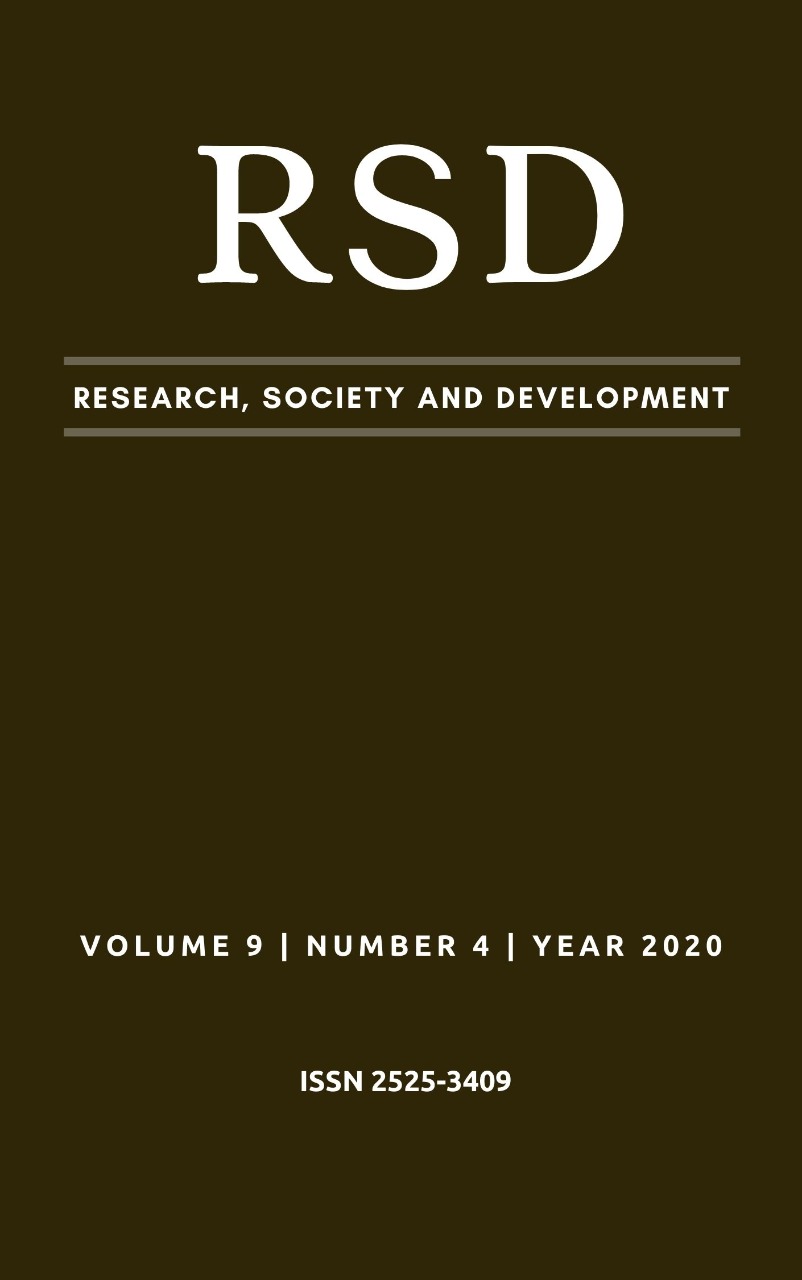Testes Tetraédrico vs. Triangular: Um estudo de caso com refrigerante tipo guaraná
DOI:
https://doi.org/10.33448/rsd-v9i4.3049Palavras-chave:
Teste discriminativo, Teste Tetraédrico, Teste Triangular, Distância Thurstoniana.Resumo
Testes sensoriais discriminativos tem como objetivo identificar se a diferença entre dois estímulos similares é percebida. Neste estudo nós comparamos a eficácia dos testes Triangular e Tetraédrico na detecção da diferença entre duas amostras de refrigerante do tipo guaraná, através do cálculo da proporção de discriminadores e distância thurstoniana. As amostras avaliadas foram produzidas por diferentes métodos de clarificação do xarope (carvão ativado e coluna de troca iônica). Em cada teste, participaram 99 provadores; o teste Triangular avaliou três amostras e o teste Tetraédrico avaliou quatro amostras, em blocos randomizados. Apenas o teste Tetraédrico foi capaz de detector diferença significativa entre as amostras (p<0,05), com uma pequena proporção de discriminadores e distância thurstoniana inferior ao limite de percepção, indicando que o teste Tetraédrico é mais poderoso e sensível que o teste Triangular.
Referências
ASTM International. (2014). Standard Practice for Estimating Thurstonian Discriminal Distances (ASTM E2262-03). Retrieved on January 22, 2016 from www.astm.org.
Barnabé, D., & Venturini Filho, W. G. (2010). Refrigerantes. Bebidas não alcoólicas: Ciência e Tecnologia. vol. 2. São Paulo: Editora Blucher.
Bi, J., & O’mahony, M. (2013). Variance of d´ for the tetrad test and comparisons with other forced-choice methods. Journal of Sensory Studies, 28, 91–101.
Delwiche, J., & O’mahony, M. (1996). Flavour discrimination: An extension of Thurstonian paradoxes to the tetrad method. Food Quality and Preference, 7, 1–5.
Dutcosky, S. D. (2013). Análise sensorial de alimentos (4th ed.). Curitiba: Champagnat.
Ennis, D. M. (1993). The power of sensory discrimination methods. Journal of Sensory Studies, 8, 353–370.
Ennis, J. M. (2012). Guiding the switch from Triangle testing to Tetrad testing. Journal of Sensory Studies, 27, 223–231.
Ennis, J. M., & Christensen, R. (2014a). A Thurstonian comparison of the Tetrad and Degree of Difference tests. Food Quality and Preference, 40, 263-269.
Ennis, J. M., & Christensen, R. H. B. (2014b). Precision of measurement in Tetrad testing. Food Quality and Preference, 32, 98–106.
Ennis, J. M., & Jesionka, V. (2011). The power of sensory discrimination methods revisited. Journal of Sensory Studies, 26, 371–382.
Garcia, K., Ennis, J. M., & Prinyawiwatkul, W. (2012). A large-scale experimental comparison of the tetrad and triangle tests in children. Journal of Sensory Studies, 27, 217–222.
Gridgeman, N. T. (1956). Group size in taste sorting trials. Food Research, 21, 534–539.
Ishii, R., O´Mahony, M., & Rousseau, B. (2014). Triangle and tetrad protocols: Small sensory differences, resampling and consumer relevance. Food Quality and Preference, 31, 49–55.
Jesionka, V., Rousseau, B., & Ennis, J. M. (2014). Transitioning from proportion of discriminators to a more meaningful measure of sensory difference. Food Quality and Preference, 32, 77–82.
Konen, J. C., & Wilson, J. R. (1992). Replacing carbonaceous adsorbents with acrylic and styrenic strong base anion resins in cane sugar decolorization applications. International Society of Sugar Cane Technologists, 5(14), 1–7.
Lawless, H. T., & Heymann, H. (2010). Sensory Evaluation of Food (2nd ed.). New York: Springer.
Masuoka, S., Hatjopoulos, D., & Mahony, M. O. (1995). Beer bitterness detection: Testing Thurstonian and sequential sensitivity analysis models for triad and tetrad methods. Journal of Sensory Studies, 10, 295–306.
Meilgaard, M., Civille, G. V., & Carr, B. T. (1999). Sensory evaluation techniques (3rd ed.). Boca Raton: CRC Press.
Muñoz, A. M. (2002). Sensory evaluation in quality control: An overview, new developments and future opportunities. Food Quality and Preference, 13(6), 329–339.
O´Mahony, M., & Rousseau, B. (2002). Discrimination testing : A few ideas, old and new. Food Quality and Preference, 14, 157–164.
O’Mahony, M. (1986). Sensory Evaluation of Food: Statistical methods and procedures. New York: CRC Press.
Qureshi, K., Bhatti, I., Kazi, R., & Ansari, A. K. (2008). Physical and Chemical Analysis of Activated Carbon Prepared from Sugarcane Bagasse and Use for Sugar Decolorisation. International Journal of Chemical and Biomolecular Engineering, 1(3), 145-149.
Rodrigues, M. V. N., Rodrigues, R. F., Serra, G. E., Andrietta, S. R., & Franco, T. T. (2000). Improvement of invert syrup production using heterogeneous hidrolysis. Food Science and Technology, 20(1), 103-109.
Schlich, P. (1993). Uses of change-over designs and repeated measurements in sensory and consumer studies. Food Quality and Preference, 4(4), 223–235.
Downloads
Publicado
Edição
Seção
Licença
Autores que publicam nesta revista concordam com os seguintes termos:
1) Autores mantém os direitos autorais e concedem à revista o direito de primeira publicação, com o trabalho simultaneamente licenciado sob a Licença Creative Commons Attribution que permite o compartilhamento do trabalho com reconhecimento da autoria e publicação inicial nesta revista.
2) Autores têm autorização para assumir contratos adicionais separadamente, para distribuição não-exclusiva da versão do trabalho publicada nesta revista (ex.: publicar em repositório institucional ou como capítulo de livro), com reconhecimento de autoria e publicação inicial nesta revista.
3) Autores têm permissão e são estimulados a publicar e distribuir seu trabalho online (ex.: em repositórios institucionais ou na sua página pessoal) a qualquer ponto antes ou durante o processo editorial, já que isso pode gerar alterações produtivas, bem como aumentar o impacto e a citação do trabalho publicado.


